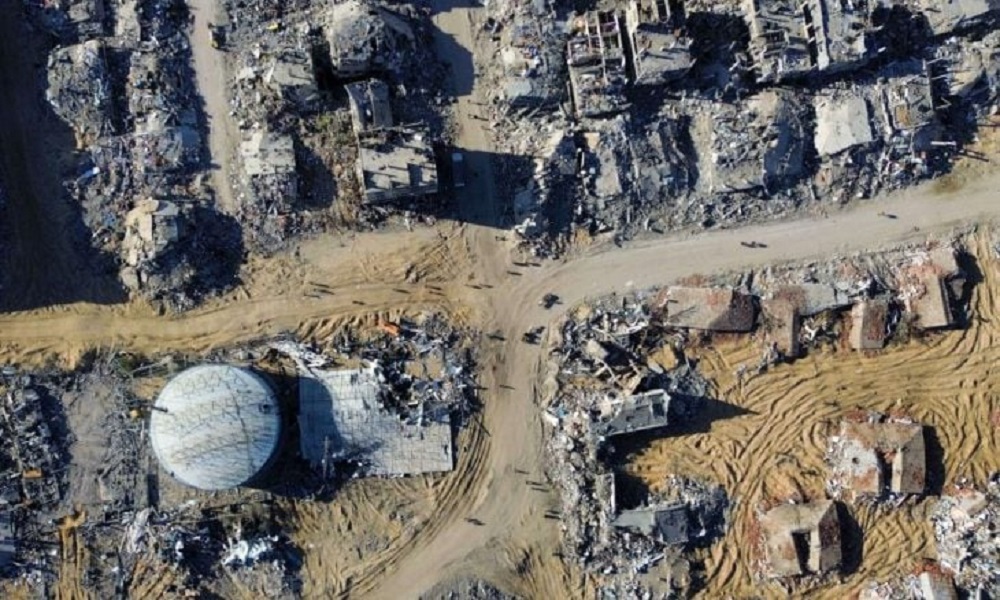Israel Set on Gaza’s Total Destruction—Only U.S. Pressure Could Halt It
As Israeli forces intensify operations and push for the permanent evacuation of Rafah, reports reveal a strategy to isolate and depopulate Gaza—with little international resistance or post-war planning.

Watan-Israel intends to completely destroy Gaza, and without U.S. pressure, it is difficult to see who could stop it.Israeli generals reportedly preferred their April 1st military operation to remain unnoticed until troops had secured their positions.
However, politicians rushed to boast about it. Defense Minister Israel Katz declared that the army had launched a new operation “to crush and cleanse the area of terrorists,” adding that the aim was “to seize large areas of [Gaza] and annex them into Israeli security zones.”
Within hours, Prime Minister Benjamin Netanyahu released a video bragging that Israel was “changing course.” This angered the generals, especially since Netanyahu revealed both the name and location of the operation: “Morag Corridor.”

The video was clearly aimed at his extremist support base. Morag was once a small Israeli settlement located between Rafah and Khan Younis, back when Israel fully occupied Gaza. Now, Israeli forces are back, and their objective is to divide the coastal strip—365 square kilometers—into isolated zones, destroying entire neighborhoods in an effort to finally eliminate Hamas, which still controls parts of Gaza.
The Israeli army has ordered Rafah’s residents to take shelter in narrow areas along the coast. Israeli security officials confirmed that the plan includes the permanent evacuation of Rafah, which represents around 20% of Gaza’s total land area. A similar operation is already underway in a smaller area in northern Gaza.
These steps are reportedly part of a broader strategy to force more than two million Palestinians to flee cities and towns and concentrate along the coastline.
In the short term, the goal is to create so-called “kill zones” where, in theory, only Hamas fighters remain. In the long term, Israel hopes the people of Gaza will “voluntarily” migrate. According to Israeli officials, isolating the population on the coast also serves another goal: by controlling humanitarian aid routes via the Morag Corridor, they aim to cut Hamas off from access to food and supplies—claiming, furthermore, that there is no shortage of aid.
This would mark a significant shift in Israeli policy. Until recently, the Israeli military refused responsibility for Gaza’s humanitarian needs, preferring to coordinate aid deliveries with international organizations. Privately, generals said they wanted to avoid effectively reoccupying Gaza.

Now, under pressure from politicians pushing to control supply routes and lay the groundwork for long-term Israeli authority, the generals have reportedly given in. Under the new plan, the Israeli army would distribute supplies directly to displaced civilians along the coast. The rest of Gaza, however, would be subjected to a scorched-earth policy designed to permanently eliminate Hamas.
It remains unclear when this phase will begin. In the meantime, supplies are once again running low. The UN World Food Programme has shut down 25 bakeries that provided daily bread, as it can no longer supply them with fuel or flour. Families are unable to bake their own bread, as a kilogram of cooking gas now costs at least 250 shekels ($66), and a 25-kilo sack of flour is double that. Basic staples like sugar and cooking oil have disappeared from markets. Water is also increasingly scarce; the capacity of Gaza’s main desalination plant has dropped by 85% since Israel cut off electricity last month.
The UN says most Gaza residents now have access to only six liters of water per day. But hunger isn’t the only life-threatening condition. Last month, Israeli forces killed 15 Palestinian medics near Rafah. The Israeli army claimed the ambulances were “moving suspiciously” without lights or sirens.
However, video footage obtained by The New York Times contradicted that claim, showing the ambulances equipped with functioning emergency lights and sirens. The medics, clearly marked in medical uniforms, were killed in a hail of bullets. The report also noted protests in Gaza over the deteriorating conditions.
Israel violated the Gaza ceasefire first, launching airstrikes on March 18. Since then, its ground operations have killed over 1,000 people.

Hamas, reportedly fearing further public unrest, has shown willingness to accept a temporary truce lasting a few weeks—during which a limited number of Israeli hostages (59 are still in Gaza) could be exchanged for Palestinian prisoners.
Even if that happens, however, Israel intends to resume its war. A diplomat previously involved in such negotiations said:“There are currently no serious plans being discussed for the day after the war in Gaza.”
A sliver of hope emerged during Donald Trump’s meeting with Netanyahu on April 7, where the former president stated:“I’d like to see the war [in Gaza] stop. I think it will stop at some point—not in the very distant future.”
While Trump’s team had previously imposed the first phase of the ceasefire on Israel, the president now seems preoccupied with other matters. Without pressure from him, it’s hard to imagine what could prevent Israel from completely destroying Gaza.






